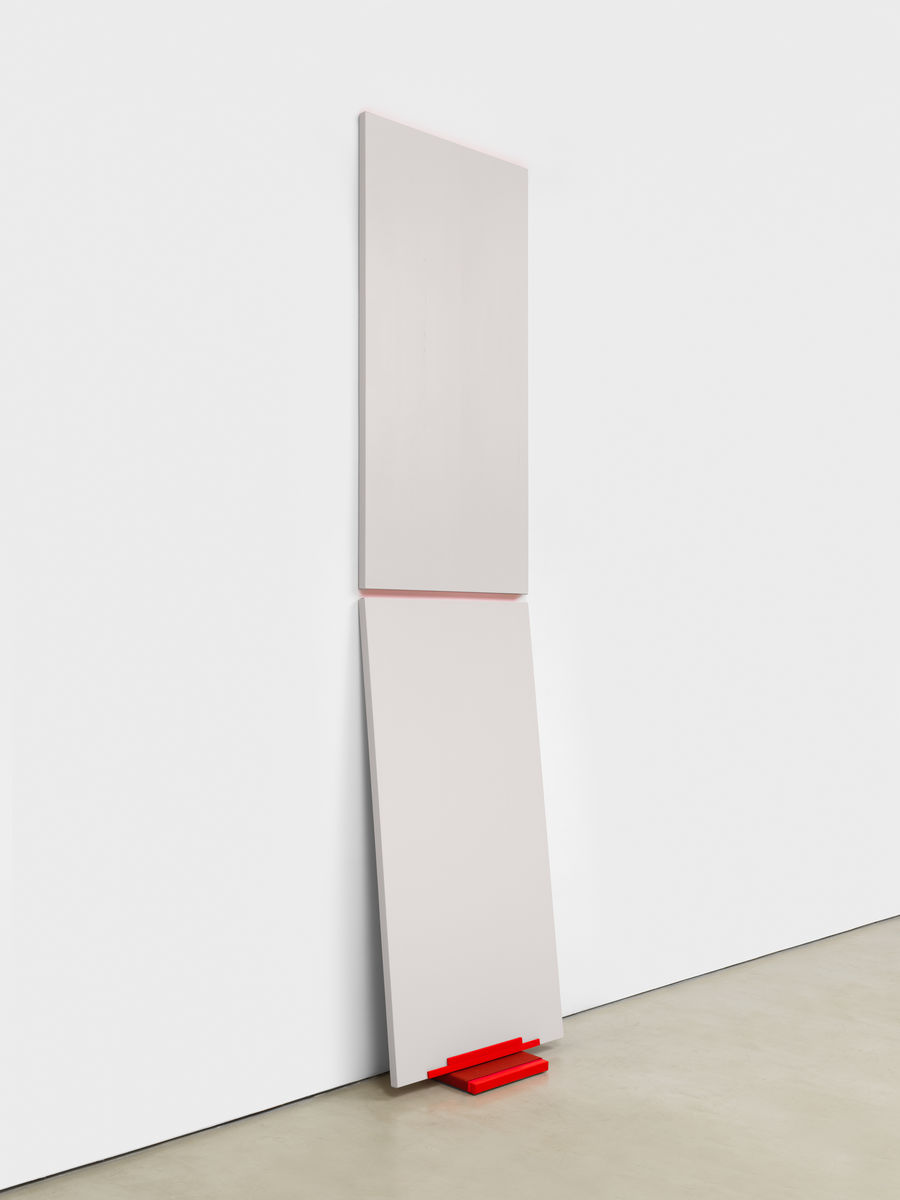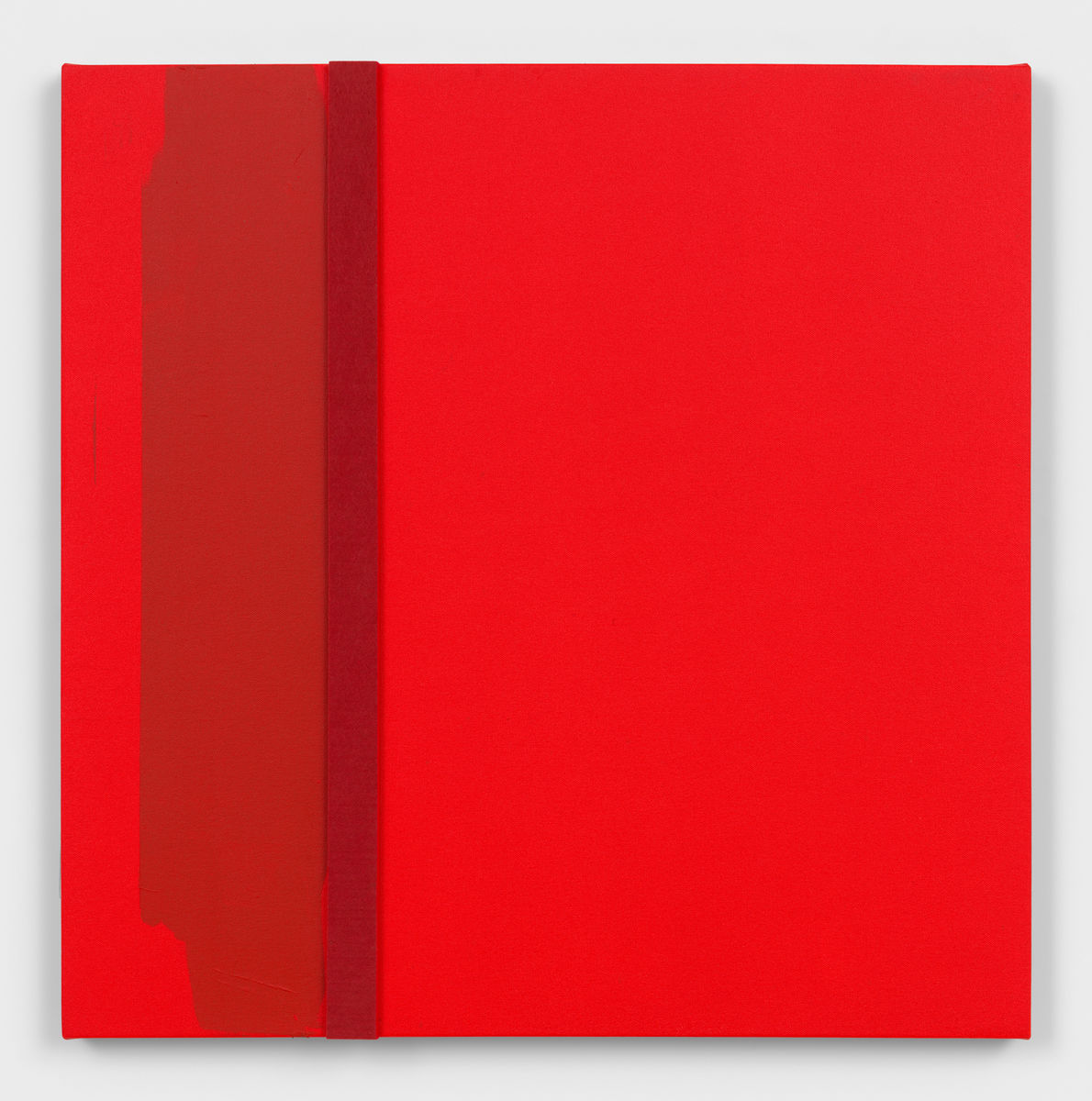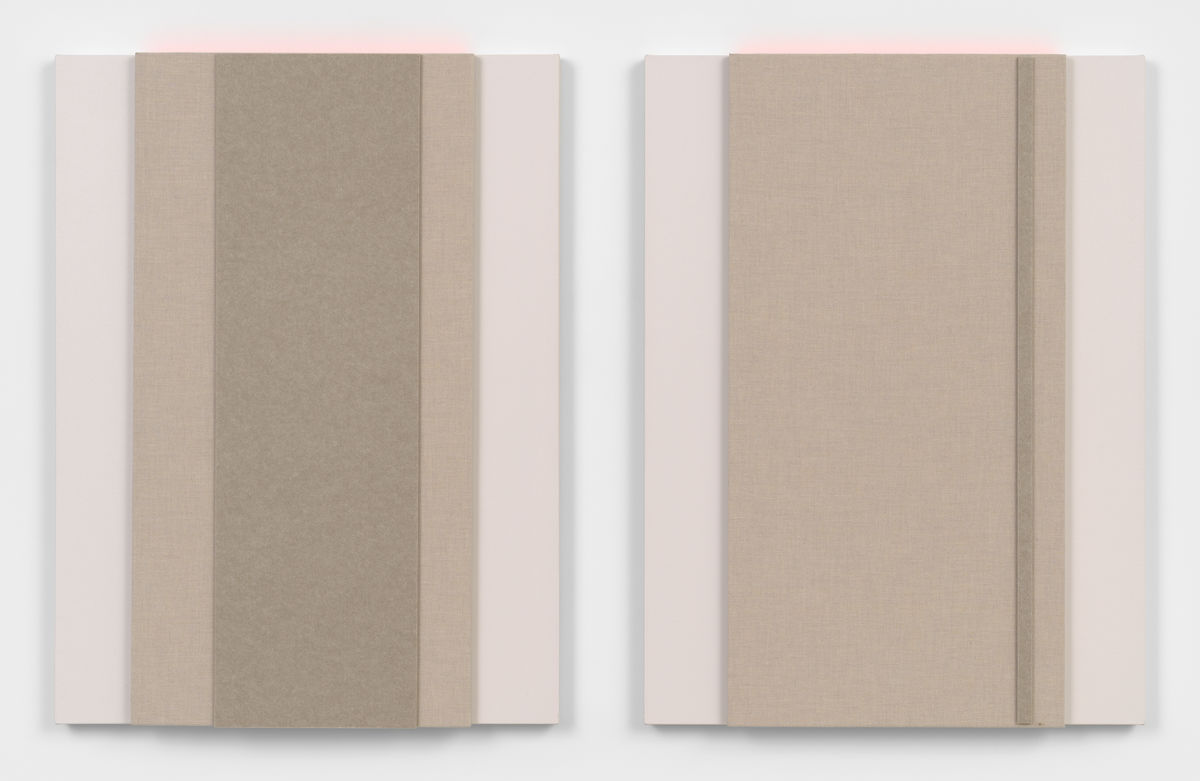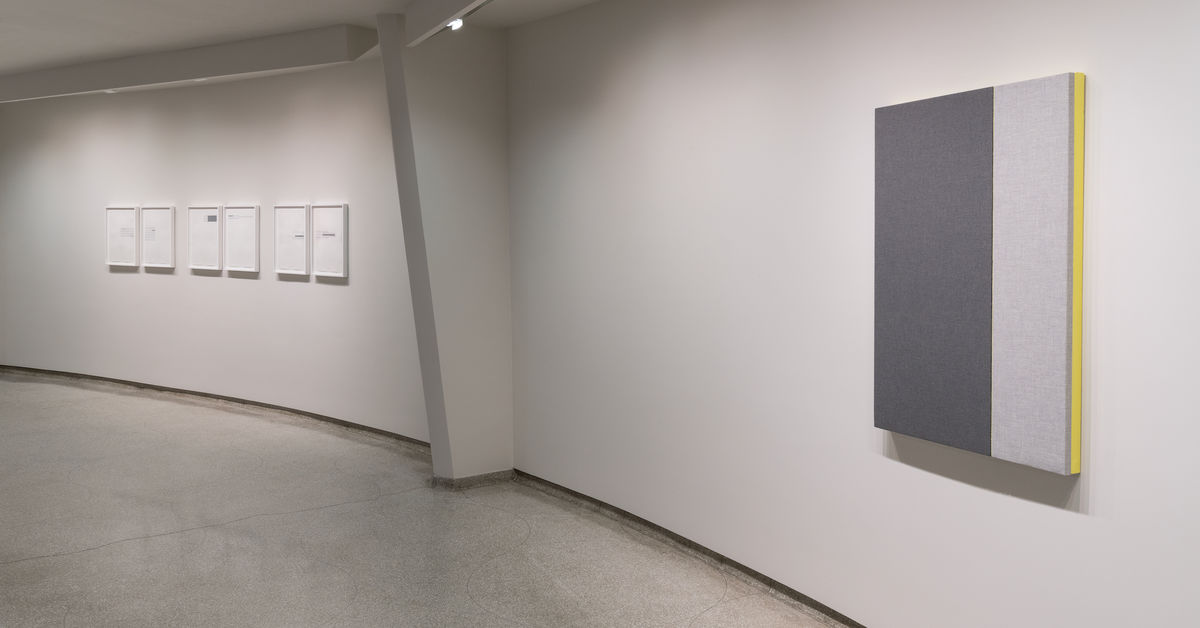
Jennie C. Jones, To the Pedal Point, 2021; Acrylic on canvas and felt in 3 parts; 72 x 36 x 1/4 in (182.9 x 91.4 x 0.5 cm), 72 x 26 x 1 3/4 in (182.9 x 66 x 4.4 cm), 2 x 16 1/2 x 12 in ( 5.1 x 41.9 x 30.5 cm); Courtesy Alexander Gray Associates, New York; PATRON Gallery, Chicago; © 2022 Jennie C. Jones
Classifiable as neither paintings nor sculptures, many of the works in the exhibition feature architectural felt and acoustic panels to create what Jones calls “active surfaces.” By absorbing sound, these materials affect the acoustic properties of their environments and invite participation in an embodied mode of perception. Protruding from the wall, the panels are both a part of and apart from the architectural spaces they transform.

Jennie C. Jones, Red Tone #1 (Clipped), 2021; Acrylic on canvas board with architectural felt; 30 x 30 x 1 1/2 in (76.2 x 76.2 x 3.81 cm); Courtesy Alexander Gray Associates, New York; PATRON Gallery, Chicago; © 2022 Jennie C. Jones
The pieces in the show comprise multiple components and take the form of diptychs and triptychs—arrangements that Jones compares to chords in music. The surfaces of these objects balance a contained minimalist rigor with gestural painted marks. This interplay between traces of the artist’s hand and signs of its erasure evokes the tension between improvisation and controlled structure evident in avant-garde music. Jones channels in her hybrid objects a legacy of radical Black sonic practitioners who negotiated twentieth-century social experience with works that could be powerfully expressive in their embrace of opacity.

Jennie C. Jones, Neutral [clef] Structure 1st & 2nd, 2021; Acoustic panel, architectural felt, and acrylic on canvas in 2 parts; 48 x 36 x 3 1/2 in each | 121.9 x 91.4 x 8.9 cm each; Courtesy Alexander Gray Associates, New York; PATRON Gallery, Chicago; © 2022 Jennie C. Jones
Far more than “viewers,” visitors to the museum are encouraged to experience the social and physical dynamics of perception as they explore Jones’s works on the first two levels of the Guggenheim rotunda, as well as a sound installation on the sixth level.
Jennie C. Jones: Dynamics is organized by Lauren Hinkson, Associate Curator, Collections.
Jennie C. Jones, a Minimalist Who Calls Her Own Tune
Feb 10, 2022
Jennie C. Jones and the Music of Chance
Mar 1, 2022



